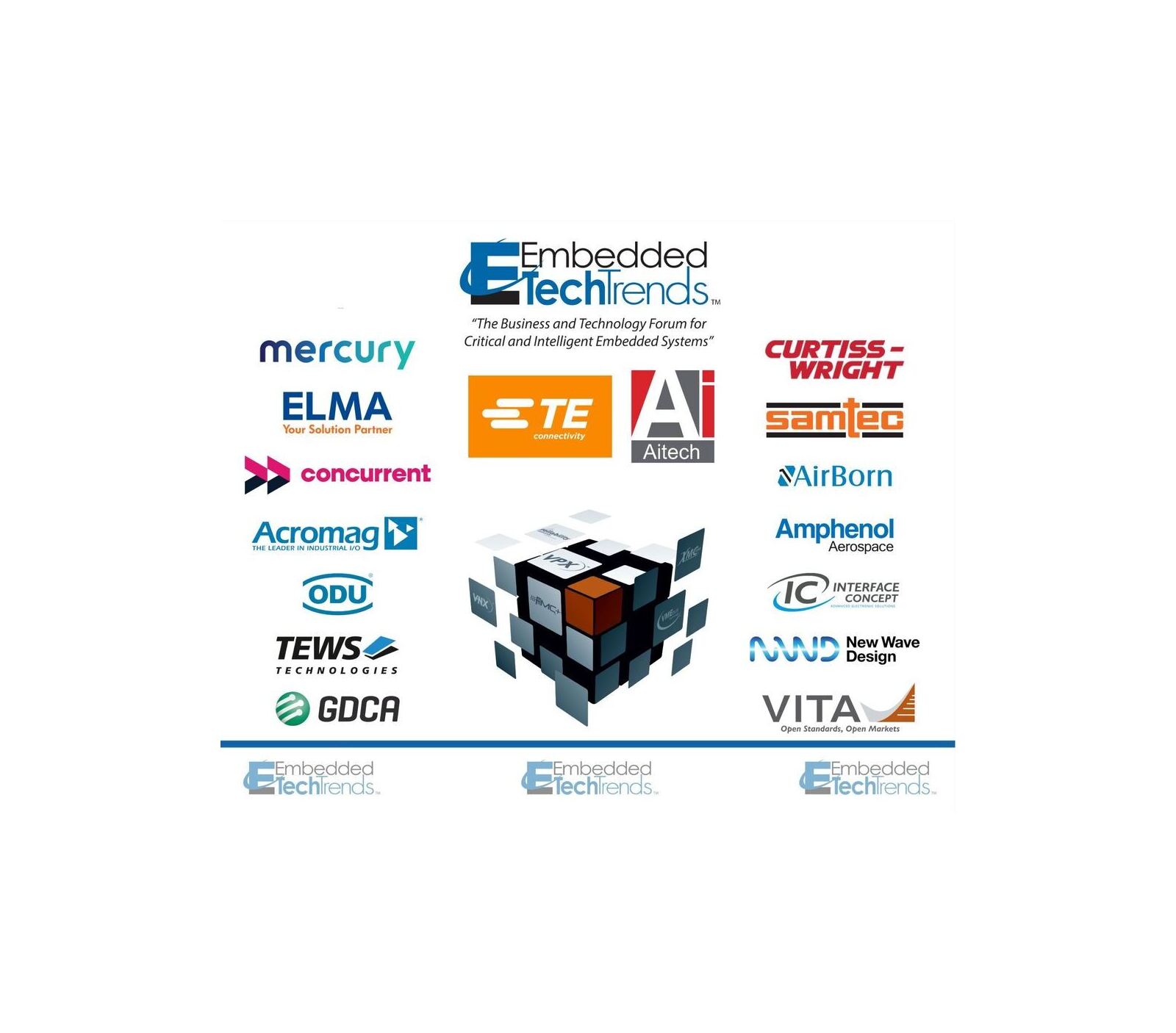Today’s processing capability is far outpacing the ability to collect and bring data into the processing stream. System architects continuously struggle to optimize schemes for the best system performance. VPX is designed to give architects the best options possible, while bringing the maximum amount of I/O into a slot and then getting it into the processing stream.
Since its introduction in 2003, VPX has continued to evolve to meet the demanding needs of its target markets. From its inception, VPX was defined to support multiple module pitches. Early implementations focused on 0.8-inch pitch spacing, but as VPX implementations broadened, a convergence on 1.0-inch pitched profiles occurred. This shift has led to a significant impact on VPX I/O strategy.
Challenges of first-generation VPX I/O
The increase in pitch width highlighted just how inefficient early connector modules standards – VITA 66.x for optical interconnects on VPX and VITA 67.x for coaxial interconnects on VPX – really were. This shortfall was further compounded by the continuous push for improved size, weight, and power (SWaP), requiring more I/O to be available within a slot, as well as a market trending to 3U-sized modules.
A lot of valuable connector space is underutilized by housing various connector styles. Additionally, combining optical and coaxial requires separate connectors, using even more valuable space. Figure 1 illustrates the connector layout and spacing for three separate VITA standards for optical interconnect on VPX using the 0.8-inch pitch spacing.
|
|
A second challenge as VPX evolved was the way first-generation standards required contacts on the plug-in-module half of the connector to be floating and those for the backplane half to be fixed. The floating/fixed combination ensures blind-mating capability, critical to the overall standard. But this meant that the only way to route a signal to the plug-in module was through a cable from the onboard component to the connector at the edge of the board.
Routing cables to the connector on the plug-in module can be difficult at best and can also add unnecessary cost and complexity to the module. Active connectors with intelligence or driver circuitry would never be practical with the floating-connector style originally specified.
VITA 66.5 – the hybrid variant for I/O
In developing the VITA 66.5 Optical Interconnect on VPX – Hybrid Variant standard, it was determined the first area that needed improving was the elimination of a cable requirement. Running cables of any type to a plug-in module is not desirable. Having a blind-mate connection scheme that could eliminate cables is very important. There is a significant savings of volumetric density within the plug-in module. Added benefits include improved performance as well as reduced cost and assembly time.
The scope of the VITA 66.5 standard resided solely at the mating interface; backend termination was left open for innovation and market-driven solutions. This functionality allows for alternate packaging of the connector modules, potentially eliminating all cables on the plug-in module.
The second area of opportunity was to better utilize the full 1-inch pitch for the module. Several module widths were designed with OpenVPX implementations in mind. Within these modules, various contact sizes are available for selection. These contact variations allow optimization between power handling and density.
Integration of RF and optical contacts within a single connector module is defined in VITA 66.5. This motivation is driven by SWaP initiatives of the VPX ecosystem. This is particularly important in 3U applications, where backplane I/O is a very limited resource. Sharing the connector module makes the best use of the available space, while providing the flexibility designers require.
The last new feature is the flexibility of the contact location definition within the connector module space, a move motivated by a market desire to make better use of the space to meet specific mission requirements. This design freedom maintains interoperability that is still maintained through publication in the ANSI/VITA 65.1, OpenVPX System Profile Tables standard, enabling market-driven evolution without the need for additional VITA 66 or 67 development, which would slow acceptance.
The existing method calls out separate VITA 66 and 67 modules and integrates them within an OpenVPX slot profile. Under VITA 66.5, it will be easier to integrate the optical and coaxial interfaces in a single module.
Updates preserve design flexibility
The VITA 66.5 standard defines the compliance of the optical interface, while ANSI/VITA 67.3, Coaxial Interconnect on VPX, Spring-Loaded Contact on Backplane standard, defines the compliance of the coaxial interface. These standards are closely related, similarly structured, and intended as a supplement to the ANSI/VITA 65.1 profile tables definition. Any standardized aperture is then included within the slot profiles of OpenVPX, guaranteeing physical interoperability by documenting the dimensions.
The connector modules within the Compliant Connector Modules list – designed with overarching VPX compliance in mind – are included in new VITA 65 OpenVPX slot profiles. These slot profiles support an ever-evolving ecosystem without needing to alter the backplane, an extremely important consideration for system architects. Payload plug-in modules can be replaced as new capabilities, integrated within a slot, requiring additional contacts with different arrangements.
VITA 66.5 was written so that the backplane half of the connector fits into an aperture space defined by the standard. This means that backplane designs can be simplified because there is no need to install connectors with routing or other backplane considerations forcing complex redesigns of the backplane. The desired connector can be added into the aperture space depending on the VITA 65 OpenVPX profile selected for a specific configuration. An upgrade is as simple as replacing the existing backplane connector module with a vendor-provided replacement, all without replacing the backplane.
“Integrating active optical transceivers into the plug-in connector module requires a rugged design that not only meets MIL-STD environmental conditions, but also fits in the width of a single backplane aperture as defined in VITA 67.3,” states Steve Devore, product architect, DRS Signal Solutions, and chair of the VITA 66.5 VSO Working Group. Steve understands the challenges: “The transceiver’s mechanical mounting system and electrical interface must be able to fit side by side on the plug-in board for high port density. And the MT ferrule must be integrated into the optical transceiver to reliably mate with the backplane optical connector using slot and tab guide features. The VITA 66.5 standard defines the active optical plug-in module’s footprint outline, the mounting position on the VPX plug-in module, the position of the MT ferrules, and the alignment guide features to ensure a blind-mate connector system capable of 500 mating cycles.”
Principles behind the standard
The following three objectives are the principles behind the VITA 66.5 standard:
- Eliminate the requirement of cables on the plug-in module: The standard eliminates the requirement that optical cables must be routed from the transceiver to the plug-in module to backplane connector. Instead, improved active connectors can be used – increasing density, lower costs, improved performance, and ease of assembly. No more manually adding short cables on the plug-in module. The added benefit for optical implantations is the ability to support an active module where an active optical transceiver is integrated in a blind-mating configuration.
- Facilitate standard integration of VITA 65, VITA 66, and VITA 67: The standard focuses on the mating interface definitions. Backplane module footprints for common connectors are defined in the ANSI/VITA 66.4 and ANSI/VITA 67.3 standards. This is a key factor enabling physical backplane slots to support multiple I/O configurations, as shown in Figure 2.

Figure 2 | a) 3D view of example backplane apertures and b) 3D view of module E shell. - Enable growth within the document: The standard is structured to allow market-driven evolution, with sections designed to support the addition of new interfaces or modules; this enables backwards compatibility, with a clearer path to support subsequent designs.
VITA 66.5 going forward
The VITA 66.5 working group was very creative in developing this standard. They were able to enable state-of-the-art I/O connectivity, while providing a path for maintaining leading edge I/O density. The door is wide open for future innovation in VPX I/O.









